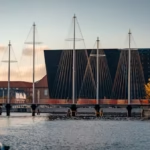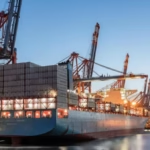In the dynamic world of engineering, Europe stands out as a hub for innovation, especially in marine and industrial sectors. Across the continent, numerous ongoing initiatives—known collectively as European active projects—are shaping the future of technology, sustainability, and industrial practices. These projects serve as real-world solutions to complex engineering challenges, providing tailored, practical answers that support industries from shipping to manufacturing. Whether enhancing maritime safety or optimizing industrial processes, these ventures showcase Europe’s commitment to pioneering engineering excellence.
In this article, we’ll explore what European active projects are, their significance, key sectors involved, and examples of groundbreaking initiatives making waves today. We’ll also delve into the impact of these projects on environmental sustainability, technological advancement, and economic growth. Let’s navigate the exciting world of European engineering projects and uncover how they are transforming marine and industrial landscapes.
What Are European Active Projects?
European active projects refer to a broad range of ongoing research, development, and engineering programs sponsored or supported by European entities, including governments, the European Union, and private industries. These projects address specific technical challenges, aiming to innovate, improve, or revolutionize existing systems and processes.
Unlike temporary or isolated experiments, these initiatives are active, well-funded, and designed to produce tangible results that can be implemented in real industrial or marine environments. They often involve collaboration between multiple countries, organizations, and experts, pooling knowledge and resources to create solutions that benefit the entire European region and beyond.
The Importance of European Active Projects
The significance of European active projects lies in their ability to drive progress on multiple fronts simultaneously:
Engineering Innovation: By focusing on cutting-edge technologies and methodologies, these projects push the boundaries of what’s possible in engineering disciplines.
Economic Impact: Successful projects often lead to new products, services, and improved efficiency, boosting economic competitiveness for European industries.
Environmental Sustainability: Many projects prioritize eco-friendly technologies, reducing environmental footprints, particularly in traditionally high-impact sectors like shipping and manufacturing.
Collaboration and Knowledge Sharing: Through multinational partnerships, these projects enhance cooperation and skill exchange across European countries.
Addressing Real-World Challenges: By targeting specific industrial or marine issues, the projects deliver honest, practical solutions tailored to actual needs.
Key Sectors Supported by European Active Projects
While the scope of these projects is broad, two sectors are especially prominent:
Marine Sector
Europe’s extensive coastlines and maritime traditions make the marine industry a major focus area. Active projects here work on enhancing vessel safety, improving port operations, advancing offshore energy solutions like wind farms, and developing cleaner shipping technologies.
Industrial Sector
The industrial sector includes manufacturing, construction, and energy production. Projects in this domain explore automation, robotics, energy efficiency, smart factories, and sustainable production methods.
Together, these sectors form a crucial backbone of the European economy, and the projects targeting them help ensure long-term resilience and competitiveness.
Innovation in the Marine Sector: Pioneering Projects
Europe’s marine projects often focus on balancing operational efficiency with environmental responsibility. One key area is reducing emissions from ships by developing alternative fuels, such as hydrogen and ammonia, or enhancing electric propulsion systems. These technologies aim to meet the stringent environmental regulations imposed by international maritime bodies.
Other projects are dedicated to improving navigational safety using advanced sensors, satellite data, and AI-driven predictive models. These innovations help prevent accidents and optimize shipping routes, saving time and fuel.
The development of offshore renewable energy platforms, like wind and tidal farms, is another thriving area. European active projects help design and test structures that can withstand harsh ocean conditions while delivering clean energy to the grid.
Industrial Sector Breakthroughs: Transforming Manufacturing
European active projects in industry focus on digitization and sustainability. The rise of Industry 4.0—the integration of smart technologies in manufacturing—is central to many initiatives. Projects explore the use of Internet of Things (IoT) devices, artificial intelligence, and data analytics to create more efficient, flexible factories.
Sustainability remains a core priority. Projects develop green manufacturing techniques that reduce waste, lower energy consumption, and promote circular economy principles, where materials are reused and recycled rather than discarded.
Automation and robotics are other pillars of industrial projects. By advancing robot capabilities, these projects aim to improve precision, speed, and safety in manufacturing environments.
Collaborative Frameworks: How European Active Projects Work
These projects rarely operate in isolation. Instead, they rely on partnerships among research institutions, private companies, and governmental agencies. Funding often comes from the European Union’s research and innovation programs, such as Horizon Europe, which encourages cross-border cooperation.
Through structured consortiums, participants share expertise, facilities, and data. This collaboration accelerates progress and ensures that outcomes are practical and scalable.
Additionally, many projects engage stakeholders beyond the engineering community, including environmental groups, regulatory bodies, and local communities, to ensure comprehensive solutions.
Sustainability at the Heart of European Engineering
Sustainability is a driving force behind most European active projects today. Recognizing the urgent need to address climate change, many initiatives focus on reducing carbon footprints, enhancing energy efficiency, and promoting renewable resources.
In the marine sector, projects develop technologies for zero-emission vessels and cleaner port operations. In industry, research prioritizes waste reduction, sustainable sourcing, and energy-saving processes.
This commitment not only benefits the environment but also aligns with European policies targeting carbon neutrality by 2050, positioning Europe as a global leader in green technology.
Technology Trends Emerging from European Active Projects
Several technological trends are shaping the outcomes of these projects:
Digital Twins: Creating virtual models of ships or factories to simulate performance, predict failures, and optimize maintenance.
Artificial Intelligence: Utilizing AI to analyze vast datasets, optimize operations, and enable predictive maintenance.
Advanced Materials: Developing lightweight, durable, and sustainable materials for marine vessels and industrial equipment.
Renewable Energy Integration: Designing systems that incorporate renewable energy sources seamlessly into industrial and marine operations.
Cybersecurity: Enhancing protection for interconnected systems, especially important as marine and industrial operations become more digital.
Economic and Social Impact of Active Projects
Beyond technological advances, European active projects contribute significantly to economic growth. By fostering innovation, they create new markets and job opportunities, particularly in high-tech sectors.
Communities near marine ports or industrial hubs often benefit from improved infrastructure and environmental conditions. Education and skills development linked to these projects help prepare the workforce for future challenges.
Moreover, Europe’s leadership in these projects strengthens its position on the global stage, attracting investments and partnerships worldwide.
Challenges and Future Directions
While progress is promising, European active projects face challenges such as complex regulations, high development costs, and the need for standardization across countries. Overcoming these hurdles requires continued collaboration, flexible policies, and sustained funding.
Looking ahead, projects are expected to focus more on digitalization, climate resilience, and circular economy models. The integration of emerging technologies like quantum computing and advanced robotics will likely accelerate solutions.
In summary, the future of European active projects is bright, with the potential to revolutionize marine and industrial sectors while fostering a sustainable, prosperous Europe.
Conclusion
European active projects represent a powerful force driving innovation in marine and industrial engineering. Through multinational cooperation, cutting-edge technology, and a deep commitment to sustainability, these initiatives provide practical solutions to some of the most pressing challenges facing Europe today. By supporting economic growth and environmental stewardship, they set a standard for responsible and forward-thinking engineering worldwide.
As these projects continue to evolve, they promise not only to enhance operational efficiency and safety but also to build a greener, smarter, and more competitive Europe for generations to come.
FAQs
What are European active projects?
They are ongoing research and engineering initiatives across Europe focused on solving real-world industrial and marine challenges.
Which sectors do European active projects mainly support?
They primarily support the marine and industrial sectors.
How do these projects benefit the environment?
By developing sustainable technologies and promoting energy efficiency to reduce emissions and waste.
Who funds European active projects?
Funding often comes from the European Union, national governments, and private industry partnerships.
Are these projects collaborative?
Yes, they involve multiple countries, institutions, and industries working together.
What technologies are commonly used in these projects?
AI, IoT, digital twins, renewable energy systems, and advanced materials are frequently utilized.











